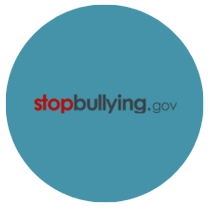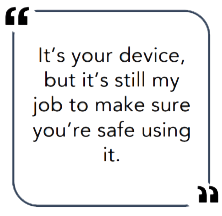
If there’s one time of year that pushes parents through a whirlwind of emotions, it’s back-to-school. My daughters are 23 and 21 now, but I can still clearly remember those seasons. After the Parkland shooting, I stood in a store aisle staring at bulletproof backpacks, wondering if that was what it had come to. A week later, I dropped them off at school and cried in the car before driving away.
There was relief in getting back to routine after a laid-back summer, sure, but also a new kind of fear. And while I worried about what could happen in the classroom, there were risks creeping in from another place entirely: the phones in their hands, the laptops on their desks, the games they played after homework.
If you’re raising school-age kids now, you know this reality. Back-to-school means more time online: school emails, gaming with friends, and group chats. That extra screen time opens doors to strangers posing as peers, scams tucked into games, phishing dressed up as school notices, and bullying inside friend circles. For older teens, add reputation, money, and identity to the list.
Why Internet Safety Belongs in Your Back-to-School Prep
Common Online Safety Risks for Kids and Teens
1) Trusting Strangers Online
What to tell your child:
“Before you accept or reply, ask yourself: do I know this person in real life? If not, show me first.”
2) Gaming Scams and Malicious Links
“If a game link promises free stuff, pause. We’ll check the source together before you click anything.”
3) Phishing Emails That Look “Official”
“Real school emails come from the school domain. If you’re not sure, don’t click. Forward it to me and we’ll check.”
4) Cyberbullying from Classmates and Friends
Common Online Safety Risks for Kids and Teens
Not every online risk comes from strangers. Sometimes it’s classmates, teammates, or even friends who use texts, group chats, or social platforms to exclude someone or gang up on them. When my daughters were in school, what worried me most wasn’t just who might contact them from the outside, but what might happen inside those peer circles.
What to watch for:
- Kids suddenly avoiding devices or apps they used to love.
- Changes in sleep, appetite, or mood without another clear cause.
- Quickly closing screens or deleting messages when you walk into the room.
What you can do and say:
- Keep lines of communication open. Ask how things are going online.
- Make it safe to tell you: “You won’t lose your phone if you bring me a problem.”
- Show them how to block, mute, and report abuse on the apps they use.
- Give them words to use: “If someone is unkind online, show me before you respond. We’ll handle it together.”
- Reframe reporting: “Blocking or reporting isn’t tattling; it’s protecting yourself.”
For older teens, it helps to frame it around respect and empathy:
“Your words online carry the same weight as if you said them out loud. If you wouldn’t say it face-to-face, don’t post it.”
How I Equipped My Kids (and How You Can Too)
I learned not to wait for something to go wrong before bringing up internet safety. We folded it into everyday talk, the same way we did with seatbelts or crossing the street. My girls knew to pause before clicking, and to come to me if something didn’t look right. Over time, those small conversations built habits.
Tools and guides I leaned on:


 If your family uses consoles, start with the official tools: Xbox Family Settings, PlayStation Parental Controls, and the Nintendo Switch Parental Controls app
If your family uses consoles, start with the official tools: Xbox Family Settings, PlayStation Parental Controls, and the Nintendo Switch Parental Controls app




Most importantly, give your kids a few clear habits:
- Pause before clicking a link.
- Ask before downloading.
- Bring it to you if something feels off.
Ready-to-use scripts for parents:
- “If you didn’t expect the link, don’t tap it.”
- “Free rewards online usually cost more than they promise. Let’s double-check.”
How to Create a Family Internet Safety Plan
At some point, I realized reminders weren’t enough. We sat down and wrote out a few rules. Having them in writing made them easier to follow.
You can try the same. Write out a short list together:
Guiding Older Teens Toward Independence Online
Younger kids need guardrails, but high schoolers are different. By the time my daughters hit their late teens, I knew I couldn’t monitor everything. What mattered most was making sure they had judgment and confidence to handle situations on their own.
For older teens, the focus shifts from parental controls to personal responsibility:
Privacy and reputation:
Remind them that colleges, employers, and even coaches may search their online presence. A careless post can linger far longer than they expect.
Money and identity risks:
Teens start opening bank accounts, applying for jobs, and managing passwords. Teach them to spot financial scams and to use unique, strong passwords for every account.
Digital boundaries:
Encourage them to think about who really needs their phone number, location, or social handles. Oversharing makes them easier to track or exploit.
Peer pressure online:
Talk openly about group chats, dares, and “burner” accounts. Make it clear you’d rather hear from them first than find out later.



Isolation, Online Radicalization, and the Online “Manosphere”
I remember watching the film Adolescence and feeling horrified. On the surface it was about a boy who gets drawn into darker corners of the internet, but underneath it was really about loneliness, bullying, and how easily that pain can be exploited. It didn’t feel like a “boy problem.” It felt like something that could happen to any teen who feels pushed out or ignored.
Afterward, I talked to my daughters about it. We didn’t just discuss the manosphere, those toxic online communities that prey on young men with promises of belonging and warped ideas about women. We talked about the bigger picture: how any isolated teen can get pulled into echo chambers that amplify anger, resentment, or hopelessness. For some it’s misogyny, for others conspiracy theories, extremist groups, or even online circles that thrive on tearing others down.
The signs aren’t always dramatic. Sometimes it’s more hours online, sharper moods, or kids who once loved socializing suddenly pulling away. That’s why conversations matter. Instead of asking my girls what they were watching or who they were following, I asked what they thought about it. That gave me a window in without shutting the door.
What you can do as a parent:
- Watch for withdrawal: If your teen spends long hours online but seems more irritable, distrustful, or detached, start asking gentle questions.
- Stay curious, not confrontational: Instead of demanding to know what they’re watching or reading, ask what they think about it. You’ll learn more and keep the door open.

- Offer healthy alternatives: Encourage sports, clubs, or in-person hangouts that balance screen time with real-world connections.
- Keep perspective front and center: Remind them, “If a group online makes you feel angry at the whole world, that’s a sign they don’t really care about you.”
Isolation doesn’t always end in radicalization but ignoring it makes the risk worse. Awareness, empathy, and steady check-ins help teens feel grounded in real support.
Parent FAQs: Back-to-School Cyber Safety
What are signs my child clicked something risky?
New pop-ups, device running hot, apps you didn’t install, password errors on known accounts. If you see this, stop using the device and get help.
Which parental controls should I start with?
Use the built-in controls on your child’s device and accounts (Apple/Google family settings, game platform settings, school account controls). Keep it simple and review monthly. Need support? Decypher will set up device controls and network filtering across your home and walk you through a quick monthly review.
How do I teach my child to spot scams?
Walk through a few examples together using the FTC’s phishing and scam-text pages. Practice hovering over links, checking senders, and slowing down when something feels urgent.
How do I talk to a preteen who hates rules?
Keep it short and practical: “I’m not trying to snoop; I’m trying to keep our devices clean and your accounts safe. Help me help you.”
Where can I get guidance on bullying and reporting?
StopBullying.gov has steps for documenting, blocking, and reporting across platforms.
What if I’m worried about toxic communities or radicalization?
Look for withdrawal, sharper moods, and “everyone is against me” language. Stay curious, not confrontational. For balanced guidance, see AACAP’s Facts for Families and the PERIL/SPLC parent guide.
Keeping Them Safe Beyond the Classroom
When my girls were younger, I obsessed over the things I could control—backpacks sturdy enough to last the year, teachers I hoped would encourage them, even drills about what to do if the unthinkable happened at school.
Looking back, I wish I had poured the same energy into their online safety, especially as they became teens and started making more choices on their own. Talking about phishing, asking them to show me suspicious links, checking in on how things were going in their group chats—that mattered just as much as any supply list.
If you’re in that season now, don’t aim for perfect. Start the conversations. Set a few boundaries. For younger kids, that might mean simple rules and parental controls. For teens, it’s more about judgment, responsibility, and knowing they can come to you if cyberbullying or scams show up in their lives.
At Decypher, we want to make that easier. That’s why we put together a free Back-to-School Online Safety Kit—something you can download, share with your kids (no matter their age), and use to start the right conversations at home.

